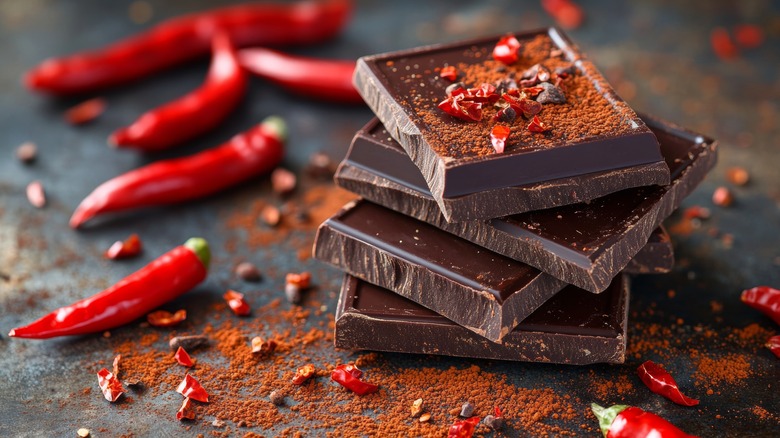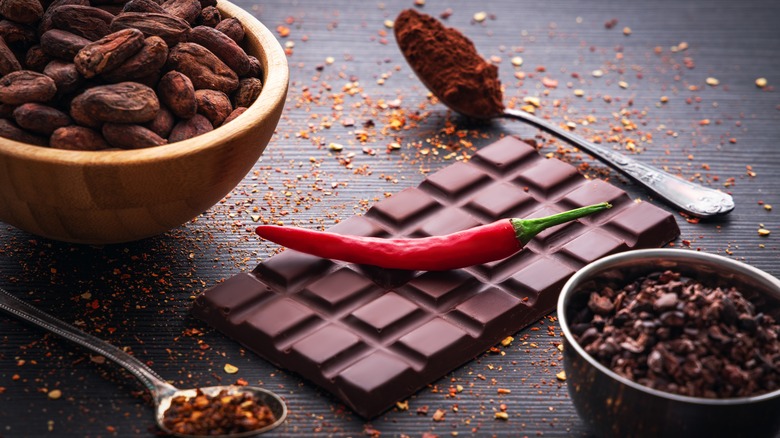The Best Way To Sample A Variety Of Chili And Chocolate Pairings
You may have heard that chili and chocolate make for a delicious food pairing, but the thought of adding punches of heat to your favorite sweet treats may seem suspicious. With a growing range of chiles and chocolates available, even experienced chocolate connoisseurs may pause before diving into this curious combination. Not to fear, there is a way to set up a tasting experience that puts flavors into your hands and makes for a fun party idea for the next cocktail hour you host at home. With the chile right pairing, you may discover that your favorite brand of chocolate takes on a richer, more layered tasting experience.
Grinding up a variety of chiles into fine powder allows chocolate samplers to control their desired level of heat to find the combinations that work for their preferences. A sprinkle of chile powder can be added to squares of chocolate to compare tasting notes of different types of chocolate and an assortment of chile types. Chocolates can offer citrus, fruity, earthy, and floral flavors that smoky and herby chiles can complement. The taste of both chiles and chocolate can carry subtle nuances as a result of the way they are processed and grown, so it is worth the culinary experimentation to identify the pairings that work for your palate.
Letting curiosity take the wheel
While smoky chipotle chile may be an easily recognizable chocolate-pepper pairing, there are plenty of others to try with squares of chocolate. Peruvian peppers like ground aji panca can provide lighter, fruity kicks of heat to chocolate and citrus desserts, while aleppo pepper delivers savory notes of tomatoes and cumin that pair well with the earthiness of dark chocolate and chocolate fudge. The milder flavors of guajillo chiles can become complementary culinary foils to semi-sweet chocolate and sweets that conceal whispers of berries and vanilla.
As you match chocolate bars with a range of powdery chile, note the flavors that play well and consider including the chile in other chocolate desserts. Adding chile to recipes like brownies and truffles won't yield the same experience as biting into chile-dusted chocolate, but you can adjust recipes accordingly to build unique layers of flavor. When garnishing cold desserts like gelatos and caramel ice creams, reach for hotter chiles like habanero, as colder food temperatures can mute chiles' strength. For food and drinks served warm, you may want to hold a conservative hand when dusting mugs of homemade hot chocolate and s'mores taken off the fire. Since these suggested guidelines are loose, feel free to lead with a spirit of adventure during your tasting explorations. You may discover a new flavor combination you can't wait to present to guests at your next dinner party.

